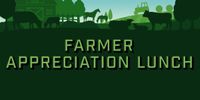Altona town council has received the final data from an Active Transportation Survey compiled by the Altona Community Action Network (ACAN).
The survey was launched as a way of initiating dialogue between the group and citizens of the community. It ran from mid-April to July 2023, drawing over 250 long-form responses from 97 residents.
Michael Hiebert, spokesperson for ACAN, says there were five main topics that kept resurfacing.
"One of them was infrastructure, things like roadway and path design. [There was] safety for all road users. Another one was a connected and complete active transportation network in the community. Some gaps were identified. And then growing a culture of active transportation. How do you encourage people to use different modes? And then the concept of leadership in the community: how do you create a vision and how do you incorporate that into policy [as] the town moves forward into the future."
In the comments attached to the survey, participants indicated that while they appreciate well-maintained walking paths in Altona, the need for sidewalks, bike paths, repair of roads and the expansion of trails were top of mind for the respondents. They noted that car-centric infrastructure can be a challenging when navigating Altona using modes other than a motor vehicle.
Safety concerns were highlighted as a significant barrier to active transportation, especially for children. Concerns were expressed specifically about schools and the movement of children between schools and between schools and their homes.
Regarding the creation of an active transportation culture, some respondents felt that the town already has many pathways and that the challenge lies in getting people to choose an active mode of getting around.
"It's about equity," said Hiebert. "We're trying to put a lens of 'not just cars' on our thinking. So often it's about adults, working adults, and cars going to their jobs and coming back and that movement around town. But streets are public space."
The final report attached to the survey data included a set out five goals and strategies that the organization feels are needed to help build a future where everyone will have accessible and active options available to them.
"One would be that there are convenient choices for everyone considering the size of our town. Though that said," noted Hiebert, "we want to facilitate occasional car trips. I think having affordable choices. Not everybody can afford a car these days. The other part of that goal is that we've seen significant cost increases in the last number of years. Another goal is reliable choices. We want to make sure that transportation infrastructure is always in a state of good repair. To link up the industrial and business sections - some of the narrowest streets [in town] - to the rest of the trail network that's in our town right now. The other concept is being carbon-free."
The survey concluded by asking how many respondents were interested in being involved in future active transportation planning. Hiebert says they were surprised by the long list of people who said 'yes' by submitting their contact information.
"I think there were about 45 or so names that were given forward. It’s a decent-sized group. We want to keep working with them. We're thinking of doing a few more cultural-based activities in the future, like how you do family bike rides once a month, or group walks, those sorts of things that are more low-key, not necessarily formal things. Just things to start to get people together and develop a community around this particular conversation. That's kind of the exciting bit that's going forward. We also are looking forward to bringing in other voices. To do this successfully, we need to make sure that there's collaboration with other stakeholders like schools, businesses, and other community groups."
The survey included a mapping exercise that allowed participants to mark up their favourite and most used routes as well as indicate their areas of most concern.
Given ACAN's goal of building something environmentally sustainable that draws people to the community utilizing the town's amazing resource of streets, Hiebert believes that active transportation adds another perspective to the concept of public space.
The group is hoping that council can use the survey data to put an equitable lens on infrastructure investment and planning that takes into account motorists and non-car users alike.
The full survey report can be found here.
~With files from Candace Derksen~

















